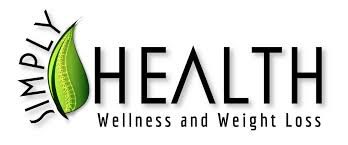The rising costs of chronic illness have placed increasing pressure on healthcare systems, families, and employers. For years, most care models have focused on treatment after diagnosis rather than earlier support. This delay often results in higher costs, lower quality of life, and limited options for long-term success. A new wave of digital tools is starting to shift that narrative. One of the most active voices behind this change is Joe Kiani, Masimo and Willow Laboratories founder.With a long-standing focus on patient-centered technology, he is now leading efforts through Nutu™, a platform that ties real-time insights, behavioral science, and artificial intelligence to help users make better decisions and reduce long-term healthcare costs.
Chronic diseases often begin with small, unnoticed patterns that accumulate over time. By the time someone seeks care, the damage may already require long-term medication or complex intervention. Much of the cost in modern healthcare comes from this delay. A preventive approach focuses instead on micro-moments, the daily decisions that influence health trajectories. The goal is not just to track symptoms, but to help people understand what is happening in their bodies before issues escalate.
Real-Time Engagement That Pays Off
Early action often hinges on timing. Intervening before symptoms escalate can make the difference between a small adjustment and a costly health crisis. Digital health tools are increasingly designed to identify those moments using passive data collection and personalized prompts. Instead of responding only to emergencies, users interact with insights throughout the day. This approach makes sustained health engagement feel practical and accessible. Rather than overwhelming people with endless metrics, it filters information and delivers clear, actionable suggestions.
For example, a notification might recommend a walk after lunch or a reminder to hydrate before an afternoon meeting. These nudges appear small, but over time, they contribute to more consistent habits and fewer spikes in health risks. For employers, insurers, and care providers, that consistency often translates into fewer claims, fewer sick days, and more predictable outcomes.
Small Shifts, Scaled Impact
Many traditional health plans offer incentives for annual checkups or gym visits. While helpful, those strategies can miss the day-to-day decisions that shape long-term health. Newer preventive models focus on that daily layer, meeting users where they are. By tracking patterns and offering tailored suggestions, these tools encourage changes that are easier to adopt and sustain.
The feedback loop is simple: observe, suggest, and adjust. For example, if someone tends to skip breakfast and later reports low energy, a system might suggest ways to reframe morning routines. Over time, these patterns generate a personal playbook that adapts to the user’s environment and preferences. The goal is less about overhauling behavior and more about offering support in moments that matter.
This kind of integration helps reduce reliance on clinical visits for basic health management. When people feel more confident in daily decisions, they may be less likely to seek emergency care for issues that could have been avoided. That shift can relieve financial strain on systems designed to treat rather than guide.
Economic Benefits Beyond the Clinic
The economic case for acting early has always been strong, but historically hard to measure. Emerging health platforms now provide clearer signals by tying engagement to outcomes. As users follow through on suggestions, whether it is maintaining sleep routines, reducing sugar intake, or getting outside more often, biometric data begins to shift. These changes can be tracked passively, without requiring people to manually enter updates or complete checklists.
That information becomes valuable not just for the individual but for health systems trying to allocate resources more effectively. It highlights where support is working and where further investment might yield higher returns. For employers managing health benefits, this kind of clarity offers a chance to build smarter wellness programs that reflect actual usage and response.
Joe Kiani, Masimo founder, says, “What’s unique about Nutu is that it’s meant to create small changes that will lead to sustainable, lifelong positive results. I’ve seen so many people start on medication, start on fad diets… and people generally don’t stick with those because it’s not their habits.” His approach focuses on embedding support into users’ natural routines, so that change becomes part of everyday life rather than a chore.
Meeting Users Where They Are
One barrier to traditional health programs is accessibility. Not all users speak the same language, live in similar conditions, or feel equally comfortable navigating health portals. Modern preventive tools address this by using simple visuals, customizable settings, and content designed to be culturally neutral. They are built to work in the background, providing support without being demanding.
For example, someone living in a food desert may receive different prompts than someone with access to a full grocery store. Rather than offering one-size-fits-all advice, adaptive systems can learn from the user’s reality. That sensitivity improves trust, which is often a missing element in public health outreach. The benefits show up not only in fewer hospital visits, but also in higher engagement, lower dropout rates, and a greater willingness to adopt new behaviors. When designed thoughtfully, these platforms become less like tools and more like quiet partners in the background.
Supporting Care Without Replacing It
Digital health platforms are not designed to replace clinicians. Instead, they complement professional care by giving users more autonomy between visits. These tools operate best in the in-between space, when people often feel unsure or unsupported.
By analyzing behavioral patterns, they can flag when someone might benefit from additional support. This could include skipped meals, disrupted sleep, or frequent stress signals. In some cases, care teams or health coaches may be notified if thresholds are crossed, creating an opportunity to intervene with empathy rather than urgency. This kind of early visibility helps clinicians and support staff do more with less. Instead of combing through large amounts of raw data, they receive concise insights drawn from consistent user behavior. That saves time, reduces unnecessary appointments, and makes conversations more meaningful.
A Smarter Spend on Wellness
In a healthcare economy often driven by volume, Nutu offers a different measure of value. The platform does not ask users to track every bite, every step, or every symptom. Instead, it learns from passive signals and suggests steps that feel realistic. That simplicity supports higher adoption and fewer dropouts.
For those managing benefits or overseeing population health strategies, this kind of usability matters. It reduces the friction between intention and action, and people are more likely to engage with tools that fit into their lives without disruption. As budgets tighten and expectations rise, platforms that stay steady, respectful, and useful day after day are the ones most likely to stand out.




